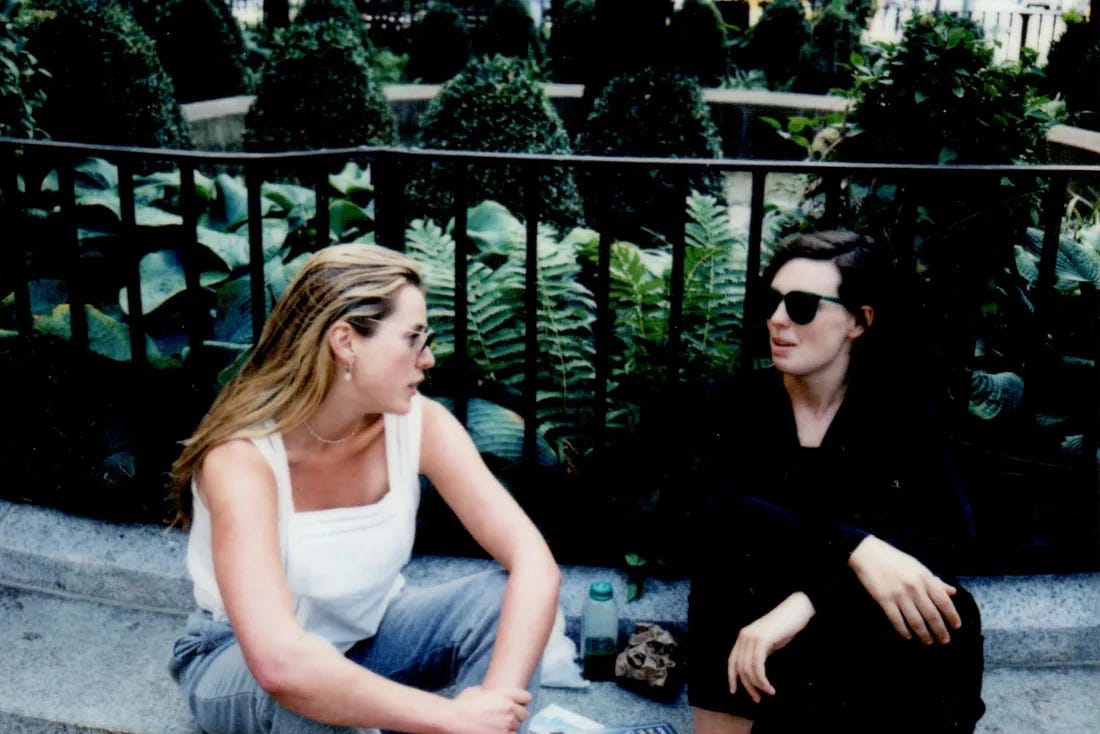Teacher's Pet
The joy of being a little bit square
Last fall, as I embarked on my sabbatical, I registered for a fiction workshop. I was (re)starting a novel that had been knocking around my head for the better part of four years and figured the built-in structure of a classroom environment would keep me on track.
On the first day of class, I arrived several minutes early, having hit every walk signal on the way over. I helped the instructor, a small, birdlike woman with a nineties-era Winona Ryder haircut, set up folding tables and chairs in the middle of the room, a children’s play studio the workshop rented out at night.
Slowly the room filled. There were maybe eight or 10 of us. One seat remained empty until five minutes into class, when a woman entered breathless and rushed. “Sorry, sorry,” she said. Something about the trains or some craziness at home. She had long, layered hair. I recognized her from TikTok, where her debut, a queer campus novel, had found a devoted fandom. It had been one of my favorite books of the year.
We’d both signed up to submit our work the following week, a choice I’d made before I knew what I was up against. She was a published author, her first book a New York Times Editor’s Choice. She was making a living, at least as best as I could tell, as a writer and influencer. She was loudly and proudly bisexual. I was a mid-level tech peon in the midst of her not-quite-midlife crisis, wondering if writing was destined to forever be a side project for me. My version of coming out consisted of spending my brief year on the apps toggling on and off an openness toward dating women and, years later, making an offhand joke in a stand-up comedy set.
The Writer submitted her excerpt for workshop two days late, thanking everyone for their patience as she dealt with a personal crisis. Her piece, an excerpt from her embryonic second novel, was gorgeous and arresting. The plot, still nascent, was hard to discern, and each section was written nonlinearly, as if she’d grabbed them from her brain at random, but something about her voice grabbed you immediately. You couldn’t help but keep reading.
My excerpt started from the beginning and built linearly, following a meticulous outline I’d crafted using that most basic of structure guidelines, Save the Cat. The feedback I got from the class was that my structure was “smart”; readers appreciated the momentum and plotting.
But I didn’t want to be good, to hit every mark on some rubric. I wanted to be great, to supersede the very idea of rubrics.
I wanted to be her.
A few classes in, The Writer asked me how I was liking the workshop. I told her it was helpful to be back in a classroom: It brought out the Good Student in me.
“Oh, I hated school,” she said nonchalantly. “But I find the community helpful.”
“You don’t get it!” I wanted to scream. “I understand this is lame of me! I’m in on the joke!!”
I felt the way I so often did around people who seemed effortless: very young and deeply uncool. We were two ends of a pole, and in the dichotomy of well plotted but unsurprising ←→ no plot but genius writing, I wanted very much to be on the other end. I felt like the Natalie Beach to The Writer’s Caroline Calloway, a dutiful foil to the obvious genius.
For a week or two, I told myself that The Writer might just as soon wish she had my innate sense of momentum and plot. The grass is always greener, etc. I unpacked this idea in therapy, in coaching sessions, on long walks with my partner, who grew convinced, only half-jokingly, that my obsession meant I was going to leave him for her.
Then I realized something more sobering: The Writer almost certainly never thinks about me at all. We were both just writing the best way we knew how. Her stories were emergent, plot building around scene. I knew, having tried and failed to get past the Act I mark in a past novel without an outline, that I couldn’t get through a draft without some sort of pre-existing structure. I needed the scaffolding of Save the Cat, of a classroom environment. For me, structure wasn’t a symptom of perfectionism; it was the only way around it.
That didn’t make me lame. It just made me me. (And, okay, maybe a little bit lame, but in a way I could own.)
It’s a lesson that I’ve had to internalize as a consultant, too: There are certain ways of operating that just work for me. I like to sleep in a little, even on weekdays. I tend to have more productive phone calls in the early afternoon, which allows me time to do deep work first thing and then ankle-biting administrivia or workouts in the late afternoon, when my energy flags.
That this is my optimal schedule is no less true because I’d originally imagined waking up at 6 or 7 a.m. to get in early morning OrangeTheory before beginning my day, showered and caffeinated, with 9 a.m. calls. I’m not a night owl, either; occasionally I get evening bursts of energy, usually when I’m working on a proposal or a piece of content that I can’t get out of my head, but the truth is that I don’t operate best at the extremes. I haven’t even kept up with OrangeTheory, replacing its high-energy machismo with the more subtle core work of Pilates.
We all just need to find the structure, or lack thereof, that helps us get where we’re going. There are no value judgments in this process. Just what works.



